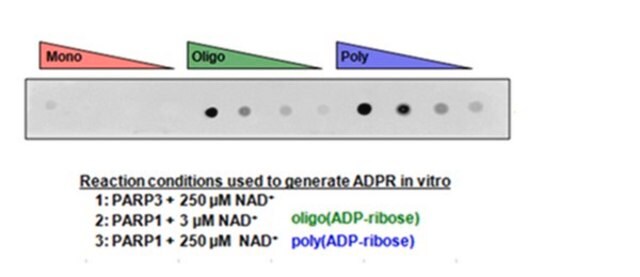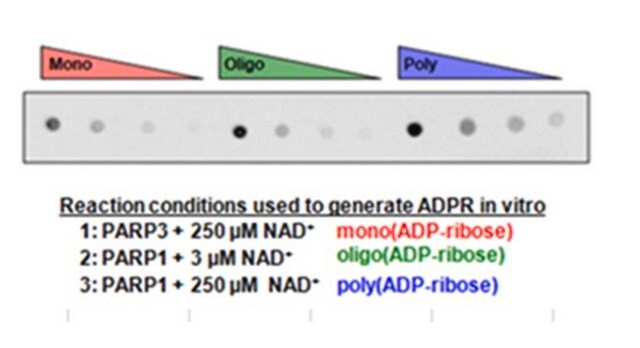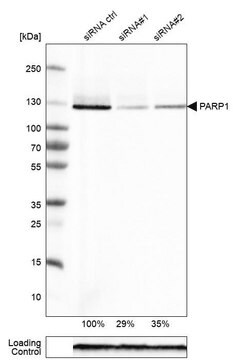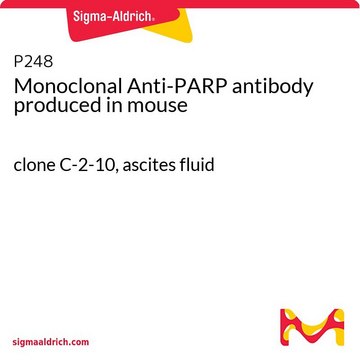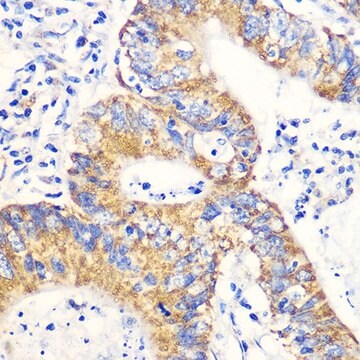MABC547
Anti-Poly ADP-ribose Antibody, clone 10H
clone 10H, from mouse
Synonym(s):
Anti-PAR antibody
About This Item
Recommended Products
biological source
mouse
Quality Level
antibody form
purified immunoglobulin
antibody product type
primary antibodies
clone
10H, monoclonal
species reactivity
human
technique(s)
immunofluorescence: suitable
immunoprecipitation (IP): suitable
western blot: suitable
isotype
IgG3κ
shipped in
wet ice
target post-translational modification
unmodified
Gene Information
human ... PARP1(142)
General description
Immunogen
Application
Immunofluorescence Analysis: A representative lot was used by an an independent laboratory to detect Poly (ADP-ribose) synthesis on transfected CV-1 cells via indirect immunofluorescence (J.H. Kupper, et al. J. Biol. Chem. (1990) 265:18721).
Apoptosis & Cancer
Apoptosis - Additional
Quality
Western Blotting Analysis: 1.0 µg/mL of this antibody detected UV treated HeLa cells. Little or no signal observed in untreated HeLa cells.
Target description
Linkage
Physical form
Storage and Stability
Other Notes
Disclaimer
Not finding the right product?
Try our Product Selector Tool.
Storage Class Code
12 - Non Combustible Liquids
WGK
WGK 1
Flash Point(F)
Not applicable
Flash Point(C)
Not applicable
Certificates of Analysis (COA)
Search for Certificates of Analysis (COA) by entering the products Lot/Batch Number. Lot and Batch Numbers can be found on a product’s label following the words ‘Lot’ or ‘Batch’.
Already Own This Product?
Find documentation for the products that you have recently purchased in the Document Library.
Customers Also Viewed
Our team of scientists has experience in all areas of research including Life Science, Material Science, Chemical Synthesis, Chromatography, Analytical and many others.
Contact Technical Service
